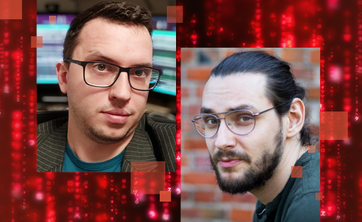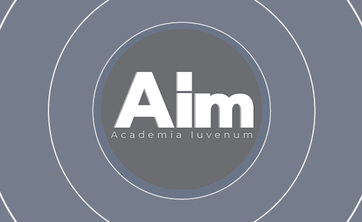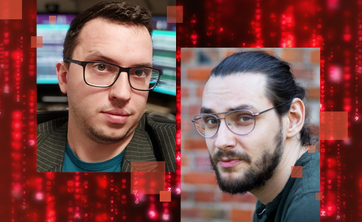Jan Kocoń, Ph.D. and Paweł Ksieniewicz, Ph.D. from our Faculty are among the 24 researchers who will participate in the work of Academia Iuvenum. Starting in October, AI will be full, for the first time comprising 48 participants.
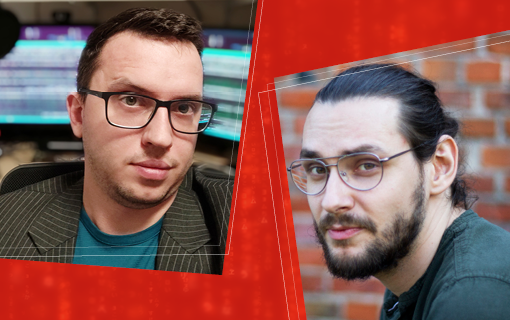 Academia Iuvenum (AI) consists of successful researchers from Wroclaw University of Science and Technology (at least one year after obtaining Ph.D. title).
Academia Iuvenum (AI) consists of successful researchers from Wroclaw University of Science and Technology (at least one year after obtaining Ph.D. title).
What is Academia Iuvenum?
 It is an elite body, selected for a two-year term of office. Its task is to undertake various initiatives for the University, create a platform for the exchange of scientific ideas, and enable young scientists to express opinions inside and outside the University.
It is an elite body, selected for a two-year term of office. Its task is to undertake various initiatives for the University, create a platform for the exchange of scientific ideas, and enable young scientists to express opinions inside and outside the University.
Although the body consists of 48 people, the first 24-person team was established last year and Academia Iuvenum will start operating in its entirety only from October 2022.
The body is intended to have 24 new representatives elected each year for a term of office lasting 2 academic years.
Who can join AI?
Members of the Academy may be researchers who obtained a doctoral degree no later than one year before the commencement of their term of office, are under 35 years of age by the commencement of their term of office (in the case of female researchers, this age limit is increased by one year for each child born or adopted) and have significant achievements in their scientific discipline.
AI members can count on a number of benefits that are intended to help them focus on their scientific work, including an additional 50 percent pay rise to their assistant professor salary or reducing the teaching load to 120 hours.
They can also benefit from a program of specialized training and workshops on various issues – incl. effectively obtaining grants, public speaking, contacts with the media or the art of argumentation.
Through Academia Iuvenum, our University wants to educate future great leaders, but also to make work at Wroclaw University of Science and Technology more attractive, and thus – to convince young scientists to continue their professional careers at the University.
The current AI composition can be found here.
These are the new members of Acaemia Iuvenum:
ARCHITECTURE AND URBAN PLANNING
Joanna Majczyk, Ph.D., Arch.
Faculty of Architecture
Department of Public Building Architecture and Design Principles
She conducts research on post-war European architecture and urban planning, with particular emphasis on design concepts developed during the period of socialist realism. Her objective is to bring to light mostly never built designs of buildings and urban complexes, and after comparing them with Soviet models – to find answers to the question about the "national identity" of the concepts of Polish designers. The results of her research should make it possible to verify the "traditionally" negative assessment of architects' activities during the period of socialist realism.
In recognition of the publishing activity, Joanna Majczyk was asked to write an article on post-war urban planning in Wrocław, which will be published in the monograph "Urban planning during socialism: views from the periphery" published by Taylor & Francis.
She believes that her greatest scientific achievement is her doctoral dissertation, which is in fact a monograph on the work of the architect Andrzej Frydecki, a modernist and one of the founders of the Faculty of Architecture at Wrocław University of Science and Technology. Using his life as an example, she presented the situation of a whole generation of artists who were successful in pre-war Poland, and who struggled with numerous problems after the war, when their experience was perceived as a burden rather than a distinguishing feature and attribute.
AUTOMATION, ELECTRONIC AND ELECTRICAL ENGINEERING
Dominika Kaczorowska, Ph.D.
Faculty of Electrical Engineering
Department of Electrical Engineering Fundamentals
In her scientific work, she deals with optimization methods, algorithms for controlling power flow in a microgrid and planning the work of elements that comprise microgrids, in particular energy storage devices. In her activities so far, she has focused on developing scenarios for controlling power flow in microgrids, where the main element that was controlled was the energy storage device.
At the stage of doctoral dissertation, she developed a number of tests to assess a given optimization algorithm in terms of its characteristics, including the speed of operation, the resulting error, convergence, and more. She also plans to analyze new variants of the swarm algorithm in terms of parameters applied to problems related to microgrid planning.
She believes that the most important result of her work to date is research on the development of algorithms for controlling storage devices in microgrids under the MESH4U project, some of which – based on computational intelligence – will be implemented in a real energy storage controller.
AUTOMATION, ELECTRONIC AND ELECTRICAL ENGINEERING
Olga Rac-Rumijowska, Ph.D.
Faculty of Electronics, Photonics and Microsystems
Department of Microsystems
The main area of her research interests are nanocomposites as well as electrically conductive fabrics and fibres. In the near future, she plans to continue research into this subject, focusing primarily on surface modifications to fabrics and other flexible substrates.
Textiles with electrically conductive properties have many applications as they combine functionality with high wearing comfort. Depending on e.g. the conductivity value, the shapes and the quality of the obtained layers, they can be used as shielding materials, conductive paths for assembling other electronic components for clothes or as sensor elements.
She believes that her greatest achievement is the development of a method of obtaining nanocomposite fibres, in which doping with nanoparticles takes place as a result of in situ synthesis of silver nanoparticles in a spinning solution, from which fibres are then formed. The developed method is completely new and original, and it was used in the process of forming two types of fibres used in the textile industry: cellulose and polyacrylonitrile.
AUTOMATION, ELECTRONIC AND ELECTRICAL ENGINEERING
Piotr Szyszka, Ph.D.
Faculty of Electronics, Photonics and Microsystems
Department of Microsystems
His research work is related to a new field – high vacuum microsystems or high vacuum MEMS, which is being developed by a dedicated research team at W12. He plans, among others, to perform research on the possibility of developing a miniature mass spectrometer using MEMS techniques to analyse the composition of gas atmosphere and also to participate in the project financed by PGNiG and concerning measurements of hydrogen in natural gas.
He believes that his most significant scientific achievement is the development of a completely coherent concept of a miniature on-chip mass spectrometer made with MEMS techniques. It integrates all components of a mass spectrometer with vacuum systems, including the pump and the sample dosing system, which is unique in the world and opens the way to chemical analysis systems with an unprecedented scale of integration and miniaturization.
INFORMATION AND COMMUNICATION TECHNOLOGY
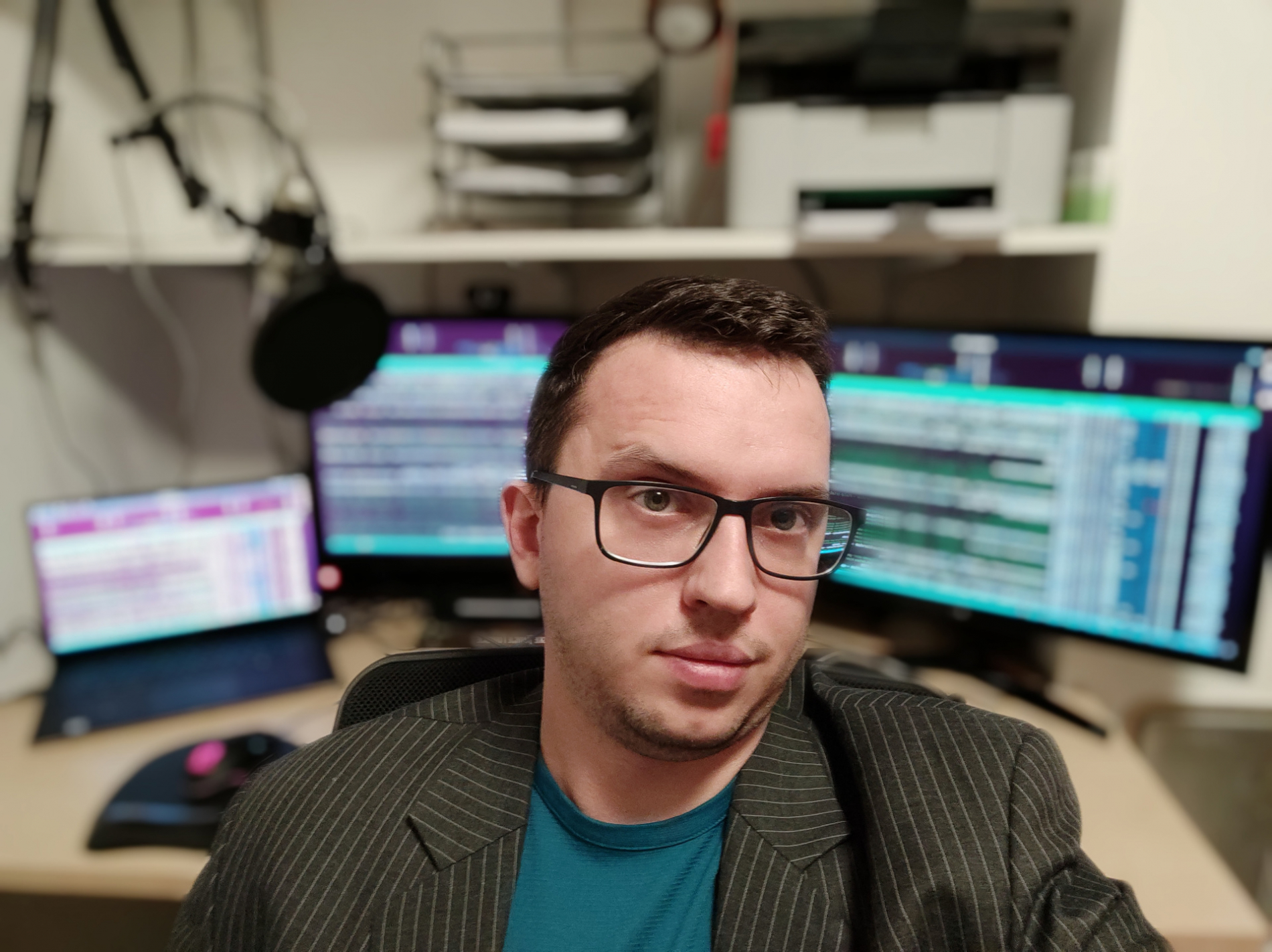 Jan Kocoń, Ph.D.
Jan Kocoń, Ph.D.
Faculty of Information and Communication Technology
Department of Artificial Intelligence
In his research work, he deals with the development of artificial intelligence methods in natural language processing. Currently, most of his works concern the development of personalized models based on deep neural networks for subjective tasks, such as recognizing emotions, offensiveness, humour, overtones, etc. in texts. His research aims at orienting AI methods to the needs of individuals and at making the decision process allow for the characteristics of individuals and the context in which the text is assessed.
These works also have practical applications, as the CLARIN-PL project includes services based on the developed models, which are used by researchers in the humanities and social sciences, as well as by companies dealing with, inter alia, media monitoring.
He believes that his most important achievement so far is his participation in the CLARIN project, which gives him access to a large research team and an opportunity to conduct research in the field of personalization of machine learning models in the analysis of emotions, as well as the use of Continual Learning methods in NLP tasks.
INFORMATION AND COMMUNICATION TECHNOLOGY
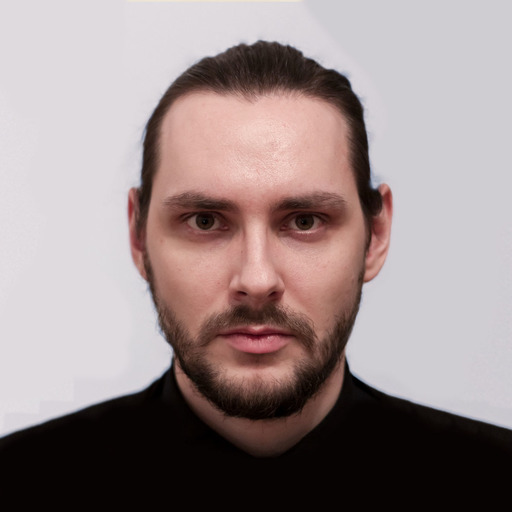 Paweł Ksieniewicz, Ph.D.
Paweł Ksieniewicz, Ph.D.
Faculty of Information and Communication Technology
Department of Computer Systems and Networks
His research concerns the so-called classification of difficult data, understood as the processing of multidimensional, stream data and data with a significant degree of unbalance.
Since December 2021, he has been managing the SWAROG project (Artificial Intelligence Disinformation Detection System), which received the maximum NCBiR score in the INFOSTRATEG I competition, receiving funding in the amount of over PLN 8.5 million.
In his opinion, his most significant achievement was to combine the topic of detecting sources of disinformation with the analysis of streaming data and to receive a grant for the implementation of the SWAROG project. He is also the main author of the publication "Fake news detection from data streams", which is the first analysis of the phenomenon of fake news interpreted as a dynamic problem, subject to concept drifts, where models degenerate temporarily.
CHEMICAL ENGINEERING
Łukasz Lamch, Ph.D.
Faculty of Chemistry
Department of Engineering and Technology of Chemical Processes
His scientific interests are related to, inter alia, colloid chemistry, surface phenomena, synthesis and application of surfactants and block copolymers.
He plans to conduct research on the use of spontaneous emulsification to trap bioactive compounds in core shell nanostructures (sheath core), stabilized by hydrophobically functionalized polyelectrolytes (HF PEs). Due to the high, already demonstrated application potential of the described technique, the research will include the use of a membrane emulsifier to optimize the process, in order to determine the critical process parameters affecting the quality and parameters of the product.
He believes that the most important effect of his current work on the design, synthesis and encapsulation of dyes of different hydrophobicity, as well as on the optimization of fine chemicals was to obtain amphiphilic structures with desired functional properties, meeting the principles of "green chemistry" and intended for surface modification and for the solubilization of zinc phthalocyanines in order to obtain chemically and colloidally stable dispersions with excellent optical properties.
CHEMICAL ENGINEERING
Anna Siekierka, Ph.D.
Faculty of Chemistry
Department of Process Engineering and Technology of Polymer and Carbon Materials
Currently, she is researching ways to selectively separate metal ions from aqueous solutions with simultaneous energy recovery. She performs her investigations on the basis of membrane and electro-membrane processes operating with the use of an external electric field. Her research aims to discover and understand the phenomenon of selective transport of metal ions and its influence on the generation of electrical potential differences in membrane modules.
Her greatest scientific achievement is the development and production of methods for the selective separation of lithium ions from both saline waters (geothermal waters rich in lithium) and from post-mixing solutions derived from used lithium batteries.
The first aspect of the research concerned the development of the concept of using the capacitive deionization system to produce a hybrid system that allows the selective separation of lithium salts from real solutions. The next one was the separation of lithium ions from postcoat solutions from spent lithium batteries by means of an electrodialysis process (separation of Li, Co and Ni). Anna Siekierka obtained a selective cation exchange membrane for the transport of cobalt ions.
CHEMICAL ENGINEERING
Dawid Skrzypczak, Ph.D.
Faculty of Chemistry
Department of Advanced Material Technologies
He is scientifically interested in hydrogel materials, valorization of waste biomass for fertilization and fodder purposes, recovery of micronutrients from waste materials, adsorption and biosorption processes as well as water and wastewater treatment technologies.
Currently, he is working on an innovative method of supplying plants with nutrients, consisting in the production of coatings based on natural polymers containing macro- and micro-nutrients and substances stimulating plant growth (including protein hydrolysates, biochars, hydrocarbons) on seeds.
He believes that his most important scientific achievements include cooperation with Wrocław University of Environmental and Life Sciences and with the Aktiw company, which resulted in the implementation and obtaining a patent in the field of fertilizing technologies (hydrogel fertilizers), as well as publishing in international journals (∑IF: 188.669, h-index:9, citation: 291 (according to the Scopus database). He also co-developed fertilizer technologies based on renewable raw materials, which have a large implementation potential.
CIVIL ENGINEERING AND TRANSPORT
Anna Karolak, Ph.D.
Faculty of Civil Engineering
Department of Building Structures
Her research interests revolve around topics such as the history of architecture, historical objects, historic wooden structures, static work of structures, elements and connections in historical wooden objects.
She plans to conduct research on the analysis of the development of historical wooden roof trusses. Understanding the specificity of old construction and material solutions is very important not only for learning the history of these elements or structures and determining their value, but also in the design and implementation of conservation, restoration, renovation and repair works.
She believes that her most significant scientific achievement, among others, is the development of a model of static work of selected carpentry joints in wooden historic buildings, comparison of the impact of additional security elements used for individual joints and calculation of the effectiveness parameters of these joints, all made as part of her doctoral dissertation.
CIVIL ENGINEERING AND TRANSPORT
Paweł Niewiadomski
Faculty of Civil Engineering
Department of Materials Engineering and Construction Processes
His scientific work focuses, inter alia, on cement-based composites, concrete additives, designing concrete mixtures, testing the rheological, physical and mechanical properties of cement composites and the use of recycled materials in terms of their application in construction.
He plans to conduct research related to the use of waste from the refining industry as a partial replacement for cement and fine aggregate in order to obtain a new generation of ecological mortars and concretes. His work will be related to the problem of managing used materials, thousands of tons of which are stored in heaps, and which are used in the fuel industry during refining processes. The use of waste as an additive to the production of concrete, the most widely used construction material in the world, is of economic and environmental value and contributes to sustainable development and supports circular economy.
He considers his most significant scientific achievement to be the assessment of the influence of the addition of selected nanoparticles on the properties of self-compacting concrete performed as part of his doctoral dissertation.
MECHANICAL ENGINEERING
Anna Dmitruk, Ph.D.
Faculty of Mechanical Engineering
Department of Light Elements Engineering, Founding and Automation
Scientifically, she deals with metal foundry, plastics processing, composite materials, MAX phases and thermal energy accumulation.
Currently, she is working in several projects as a contractor – incl. on the development of innovative, replaceable structures of energy-absorbing safety helmets based on biodegradable plastics and on the ASTEP "Application of Solar Thermal Energy to Processes” project.
She believes that his greatest achievement is the development of highly porous materials that can be used in at least two industrial sectors: machinery and energy. The first application relates to the technology of producing MAX type porous preforms with open porosity, suitable for the subsequent pressure infiltration process. The second group of high-porosity materials (on which she worked as a team member in the ACCUSOL project) are open-cell metallic foams produced by precision casting using the technique of polyurethane foam replicas.
MECHANICAL ENGINEERING
Dariusz Pyka, Ph.D.
Faculty of Mechanical Engineering
Department of Mechanics, Materials and Biomedical Engineering
Since 2017, he has been investigating dynamic characteristics in the area of energy-consumption efficiency of composite structures related to the analysis of non-classical models of impact energy dissipation as well as numerical modelling based on hybrid methods such as FEM, SPH, etc. As a result, he developed a closed methodology of procedures using limit deformation. These works concerned a wide range of materials and were considered in various areas of their application, as exemplified by specific analyses of chemical reactors or combustion chambers.
In his opinion, his greatest scientific achievements include the development, construction and numerical optimization of a new series of catenary poles for ZBK Radom successfully implemented on PLK communication lines belonging to the PKP company, as well as the development of an industrial-standard graphene bulb structure as a finished product and a design of a finished hydrogen generator with the use of microlasers, in the form of a modular complex.
MECHANICAL ENGINEERING
Paweł Sokołowski, Ph.D.
Faculty of Mechanical Engineering
Department of Plastic Working, Welding and Metrology
He is scientifically involved in surface engineering, currently focusing on the technology of refining the surface layer (thermal spraying and surfacing processes), the use of modern materials for specific applications or diagnostics of these processes.
He is head of two projects (from NCN and NCBiR). As part of the first project, he researches coating thermal barriers used, for example, in jet engines. He plans to develop their new generation by using a laser micro-texturization process as an additional treatment of the surface layer.
The second project involves the development of a prototype of an innovative device – called "Ultramizer" – for the production of metal powders. Thanks to the use of the ultrasonic atomization process, it will be possible to produce powder materials with controlled characteristics (including the distribution of powder particle size, morphology or chemical composition).
He believes that his most important research achievement was to describe the possibility of producing ceramic coatings with a controlled microstructure, i.e. columnar, dense and porous, using the Suspension Plasma Spraying (SPS) method and a discussion of the mechanisms of coating growth.
ENVIRONMENTAL ENGINEERING, MINING AND ENERGY
Anna Kisiela-Czajka
Faculty of Mechanical and Power Engineering
Department of Enegry Conversion Engineering
She deals with the physicochemistry and technology of high-carbon waste from the fuel and energy industry, as well as with the chemistry and kinetics of boiler flue gas cleaning processes from gaseous pollutants and process equipment.
Currently, she conducts research on the functionality of carbon materials as precursors of low-temperature catalysts in the process of reducing nitrogen oxides from boiler flue gas.
In addition to research and scientific activities, she also cooperates with entrepreneurs interested in the production of activated carbons from technological and communal waste. They plan to develop a mobile installation enabling the disposal of approx. 15,000 tonnes of garbage / RDF fuel per year to produce syngas and activated carbon. She is also involved in the construction of a pilot waste pyrolysis plant.
She believes that the most important effect of her work to date is the development of a methodology for the conversion of post-process energy-related waste into active carbon and the design of a prototype smog filter for the purification of exhaust gases from domestic central heating boilers.
ENVIRONMENTAL ENGINEERING, MINING AND ENERGY
Zbigniew Rogala, Ph.D.
Faculty of Mechanical and Power Engineering
Department of Cryogenics and Aviation Engineering
Currently, he is working on refrigerators and condensers for hydrocarbon mixtures. They concern, among others the effect of temperature behind the cascade stage on the efficiency of the refrigerator and the optimization of the mixture composition depending on the temperature or modelling and experimental studies of heat transfer during recuperation for a multi-component, two-phase working mixture.
He cooperates with CryoScience – a world leader in the market of cryotherapy devices and he also conducts research with the Centre of Hydrogen Technologies at the Institute of Power Engineering. He also participates in the work of the "National FEMTO Physics Consortium in the construction, commissioning and operation of the European Antiproton and Ion Research Centre – FeedBoxes and Feed-in-lines for SIS100".
He considers his greatest achievement to be the development, in cooperation with Cryo Science, of an innovative technology of cryogenic refrigerators (with high efficiency and lower temperatures) intended for use in systemic cryotherapy.
ENVIRONMENTAL ENGINEERING, MINING AND ENERGY
Jacek Wodecki, Ph.D.
Faculty of Geoengineering, Mining and Geology
Department of Mining
He designs data analysis methods for the diagnostics of mining machine components. He is particularly interested in the analysis of data having a complex and heterogeneous structure, such as vibrations or noise.
Such data is captured at high sampling rates in the tens of kilohertz and often has a complex information structure. In the analysis of this type of data, the key is to extract the information part, in practice to separate the individual components – both carrying and not carrying information. Therefore, he plans to conduct research on the development of methods to decompose data and isolate information components.
His most significant scientific achievement is the development of the Progressive Genetic Algorithm (PGA). It is used to obtain the optimal filter for the filtration of the diagnostic signal measured on the damaged bearing.
MATHEMATICS
Michał Balcerek, Ph.D.
Faculty of Mathematics
Department of Applied Mathematics
His scientific interests include stochastic processes, probability and applications of mathematics.
Currently, his main goal is to work on the methodology related to the identification and validation of heteroscedastic and double-stochastic processes. In particular, he aims to address the diffusion and abnormal diffusion models such as the Brownian motion, fractional Brownian motion, or multi-fractional Brownian motion, by adding to them an additional factor of randomness, such as random diffusivity in a fractional Brownian motion.
He believes that his greatest achievement includes the results he presented in a series of works related to testing Gaussian processes, which are an extremely important class with which to model and predict various real data.
CHEMICAL SCIENCES
Marta Dudek, Ph.D.
Faculty of Chemistry
Advanced Materials Engineering and Modelling Group
The main goal of her research is the synthesis of new molecular probes based on the azobenzene motif. In addition, she is involved in the study of the interactions of various compounds (azobenzenes, porphyrins, organometallic ruthenium complexes) with G-quadruplexes and determination of nonlinear properties of selected derivatives using the z-scan technique.
She believes that her greatest scientific achievement is the preparation of new hybrid systems containing DNA or HSA and photochromic molecules and demonstrating the possibility of controlling light induced chirooptic response of the obtained nanostructures. The second issue is to obtain new ortho-fluoro derivatives of azobenzene, for which the process of isomerization in both directions can be induced by visible light, and to prove that using these compounds makes it possible to control the melting point of DNA.
CHEMICAL SCIENCES
Wioletta Rut, Ph.D.
Faculty of Chemistry
Department of Biological Chemistry and Bioimaging
She has created an original method of modifying SUMO proteins, which may lead to obtaining new, selective chemical tools for the study of SENP proteases. In the near future, she plans to develop this method by modifying the C-terminal fragments of the ubiquitin protein.
She believes that her most important scientific achievement is the development of selective chemical tools – fluorogenic substrates, inhibitors and chemical markers to monitor the activity of Mpro and PLpro proteases of the SARS-CoV-2 coronavirus. These enzymes are essential in the process of the coronavirus multiplication. The results of her research have been published in two prestigious journals: Nature Chemical Biology and Science Advances. The developed compounds can be used to optimize the structure of drugs designed to fight COVID-19 and as diagnostic tools.
CHEMICAL SCIENCES
Adam Szukalski, Ph.D.
Faculty of Chemistry
Advanced Materials Engineering and Modelling Group
His research interests concern the study of optically nonlinear properties of the 2nd and 3rd order for metal coordination compounds (Ru, Zn) and ligands of organic origin, containing thiophene, tetrathiafulvalene and others, as well as metallo-helicates.
He also investigates the ability to optically modulate the refractive index in cyclic azobenzene doping a synthetic polymer (PMMA) and a natural one based on deoxyribonucleic acid (DNA).
He is planning to submit a project for the Opus competition of the National Science Centre. The project will concern 3D printing and the influence of process parameters on the spectroscopic properties of the thus obtained three-dimensional objects. He believes his greatest scientific achievement to be the development of all-optical switching in organic materials.
PHYSICAL SCIENCES
Izabela Garaszczuk, Ph.D.
Faculty of Fundamental Problems of Technology)
Department of Optics and Photonics
She conducts research in the field of diagnosing dry eye syndrome, assessment of the dynamics of the tear film, safe use of contact lenses and clinical optometry with an emphasis on the anterior segment of the eye.
For the three years preceding her employment at the Department of Optics and Photonics, Wrocław University of Science and Technology, she conducted research at the University of Valencia as part of the EDEN (European Dry Eye Network) project, financed by the Maria Skłodowska-Curie grant. Its goal was to improve the diagnostic protocol of the Dry Eye Syndrome (DES) used so far. She was looking for a single biomarker (macro-biomarker) that would capture the complex nature of the disease and enable the diagnosis of DSS based on one simple test and then tracking the course of the disease and effective therapy.
Currently, she plans to standardize the protocols she had developed for measuring the dynamics of tear film exchange and to describe the differences in the measured parameters in healthy eyes and eyes in the initial stage of DES. She also intends to constantly expand her clinical database, while developing new techniques for analysing the obtained images.
PHYSICAL SCIENCES
Katarzyna Gwóźdź, Ph.D.
Faculty of Fundamental Problems of Technology
Department of Quantum Technologies
She conducts research on new materials for photovoltaic cells. Her main scientific interests are the study of defects in semiconductors using electrical methods, plasmonic effects in photovoltaics and the use of pyro and ferroelectric materials in photovoltaic cells.
Currently, it is planning to test the defects present in MOSFET transistors based on the n and p type silicon, various oxides (SiO2, HfO2, AlO2) and the metal layer with aluminium using electrical methods. Her work is aimed at optimizing these devices.
She believes her greatest scientific achievement to include reviewing and extending the knowledge of defects related to the presence of hydrogen complexes in silicon. Despite the fact that research on this subject has been conducted for several decades, inconclusive, sometimes even contradictory results on these defects were still presented. Her research results, published in prestigious journals, and based on high-resolution measurement methods are not only consistent with theoretical predictions, but also standardize and organize the existing knowledge.
PHYSICAL SCIENCES
Mateusz Szatkowski, Ph.D.
Faculty of Fundamental Problems of Technology
Department of Optics and Photonics
He deals with shaping the laser beam, modulating its amplitude, phase and polarization of light. As part of his doctoral dissertation, he developed a technique of generating, optimizing and characterizing light beams using spatial light modulators. Then he tested the developed methods in research, in which he collaborated with scientists from Mexico and Ukraine.
His research concept consists in, on the one hand, continuously developing methods for shaping the laser beam, and on the other hand, using unconventional beams directly in his research work. He links his immediate scientific future to two already started projects, which he develops in cooperation with the University of North Carolina at Charlotte (UNCC) and Tecnologico de Monterrey (TEC).
